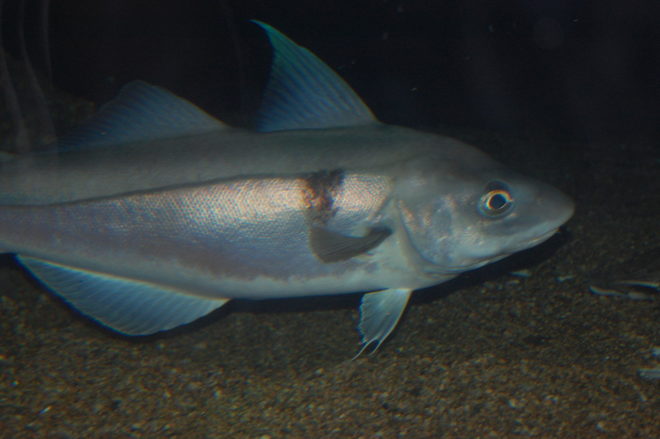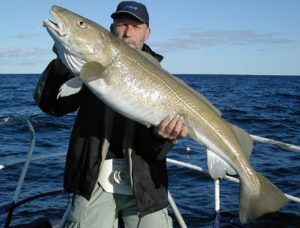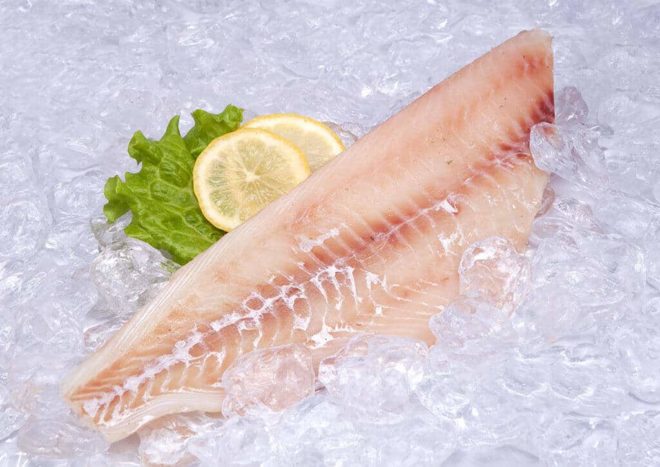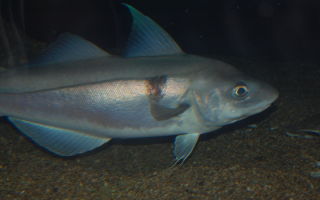Content
- 1 What is this fish
- 2 Haddock composition
- 3 Calorie haddock
- 4 The beneficial properties of haddock
- 5 Is haddock good for pregnant and lactating women?
- 6 Can I give haddock to a child
- 7 Haddock benefits for seniors
- 8 Eating haddock for weight loss
- 9 How to make delicious haddock
- 10 Haddock harm
- 11 Which is healthier: haddock or cod
- 12 Who is contraindicated in haddock
- 13 How to choose and store haddock
- 14 Conclusion
- 15 Fish reviews
The benefits and harms of haddock have long been known. This important commercial fish of the Cod family is very popular with the inhabitants of North America and Europe - it is the third largest catch after cod and pollock. This popularity is due not only to the taste of the fish, but also to its beneficial properties.
What is this fish
Haddock is a fish of the Treskovy family. She lives in the north Atlantic Ocean and in some seas of the Arctic. The average length of the fish is about 60 cm, and the weight is about 3 kg. A feature of the fish is the stripes on the sides, going from the top of the head to the middle of the tail.

Haddock composition
The composition includes the following vitamins (per 100 g of weight):
- vitamin PP - 6 mg;
- vitamin C - 0.8 mg;
- vitamin E - 0.3 mg;
- vitamin B2 - 0.3 mg.
In addition, fish contains retinol (10 mcg) and niacin (up to 3 mg).
The trace element composition of 100 g of haddock is as follows:
- phosphorus - 180 mg;
- potassium - 300 mg;
- magnesium - 35 mg;
- iodine - 150 mcg (completely covers the daily rate, the maximum concentration among all fish);
- chromium - 55 mcg (10% more than the daily value);
- cobalt - 20 mcg (double daily rate);
- copper - 230 mcg;
- fluorine - 500 mcg.
The trace element composition of the product is very interesting: with the relative scarcity of almost all components, three of them fully cover the daily needs of the body.
Calorie haddock
The nutritional value of the product is:
- proteins - 17%;
- fat - 0.5%.
Among fats, there are fatty acids of the Omega-3 (up to 260 mg) and Omega-6 (up to 12 mg) groups.
There are practically no carbohydrates. The proportion of water in meat is about 80%.

The calorie content of haddock per 100 g depends on the method of cooking the fish:
|
Cooking method |
Calorie content, kcal / 100 g |
|
Without processing |
71 |
|
Boiled |
80 |
|
Baked |
95-100 |
|
Fried |
160 |
The beneficial properties of haddock
The benefits of haddock for the body are beyond doubt. It is high in protein with relatively little fat. However, this fat, represented mainly by polyunsaturated Omega-3 acids, has a beneficial effect on the cardiovascular system, has an anti-inflammatory effect and is used in the prevention of cancer.
These fats have the property of lowering blood cholesterol levels and promoting normal fetal formation in pregnant women.
Microelements contained in fish (calcium, magnesium and fluorine) have a complex strengthening effect on the skeletal system of the body, primarily on the teeth. In addition, magnesium is involved in the regulation of blood pressure, and phosphorus has a beneficial effect on the functioning of the excretory system.
The beneficial properties of B vitamins are to improve hematopoietic function, renew skin cells and reduce stress.
Potassium has a beneficial effect on the functioning of the heart muscle, and iodine, the content of which in haddock is the highest among all fish, is an indispensable element for the functioning of the thyroid gland and maintaining normal immunity in general.
Is haddock good for pregnant and lactating women?
Due to the content of polyunsaturated fats, and especially iodine, haddock is highly recommended for pregnant women, since it is an almost irreplaceable source of these elements both in the body of the mother and the child.
You can, of course, introduce these substances into the body with the help of other products, but haddock meat is the most optimal for this purpose, since the harm from its use for this group is minimal.
Haddock during breastfeeding is recommended by doctors, since this is perhaps the only way without consequences to transfer the necessary amount of iodine to the child to form his immunity.

Can I give haddock to a child
Like all seafood, it is recommended to eat haddock for children at the age of three. Meat allows the child's body to form bone and immune systems. If a child eats haddock all the time, he will not need to introduce fish oil into the body by any other means (for example, medication).
Haddock benefits for seniors
Elderly people often have problems with the motor apparatus. Here, the introduction of this fish into their diet will be very useful, since Omega-3 polyunsaturated fats will help strengthen the functions of joints and partially relieve pain in arthrosis and arthritis.
Eating haddock for weight loss
The low calorie content of cooked haddock with a high protein content in it allows it to be recommended for the nutrition of people who are losing weight.
Diet fish has the ability to dissolve excess cholesterol in the blood and strengthen the cardiovascular system.
Naturally, we are not talking about any mono-diets, when only "fish" proteins are included in the diet, since haddock does not have the entire spectrum of necessary substances. However, it performs the function of filling the body with some of them (for example, iodine and cobalt) completely, and there is no need to take them from other food products.

How to make delicious haddock
Fish goes well with vegetables, cheese, olives, citrus fruits. It is often used with herbs and various spices. Combination with other seafood, in particular shellfish, is allowed.
However, there are exceptions. For example, it does not go well with young potatoes and legumes.
Several hundred dishes are prepared from fish using a variety of methods. The fish is low in calories, so it is most often fried or baked (except for dietary meals). It is allowed to cook fish in dry white wine.
Haddock harm
The harm of this fish is primarily associated with possible allergic reactions to seafood. The set of their symptoms is standard: from rash and itching, to vomiting and disruption of the nervous system. In addition, these allergies can exacerbate chronic diseases, even those in remission.
Another potential danger of fish is the ability of haddock to accumulate in its meat and liver salts of heavy metals, in particular, mercury. Therefore, fish should be purchased only if there is confidence in the high quality of the product. The seller is obliged, at the buyer's request, to acquaint him with the results of the veterinary examination of fish for the presence of heavy metals in it.
Which is healthier: haddock or cod
The question of which is more useful, haddock or cod, is not entirely correct. They are related fish with almost the same properties. And if the content of the same iodine or cobalt in cod meat is about the same as in haddock (in fact, slightly less), then cod meat is significantly inferior in omega-3 fatty acids (170 mg versus 260).
On the other hand, in cod liver the omega-3 content is several times higher. And although the liver is a by-product, this fact should also be taken into account when analyzing the usefulness of fish.
The calorie content of fish is approximately the same (69 kcal for cod and 71 for haddock).

Who is contraindicated in haddock
The main contraindication for haddock meat is associated with seafood allergies. Meat contains relatively few mild allergens, so allergies are rare.
Even more rare are contraindications for individual intolerance to this meat, but such cases are not only extremely rare, but unique.
How to choose and store haddock
The body of the fish should be intact, without dents. No clouding of eyes. The gills are firm and the meat around them is cloudless. The fins should look dry, a sign of repeated freezing.
There should also be no unpleasant odor. Everyone knows perfectly well how trimethylamine, secreted by rotting fish, smells.
Storing fish is a simple procedure. This is best done in the freezer. However, if the fish is thawed, then re-freezing is highly undesirable, since the beneficial properties of the fish are significantly reduced. Once thawed, the fish can be stored in the refrigerator for up to 12 hours.

Conclusion
The benefits and harms of haddock are due to its composition and lifestyle. This fish of the Cod family has a unique set of useful properties, the main of which is one of the highest iodine content among fish. Diet haddock meat is a component for a wide variety of dishes.

